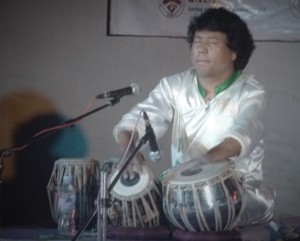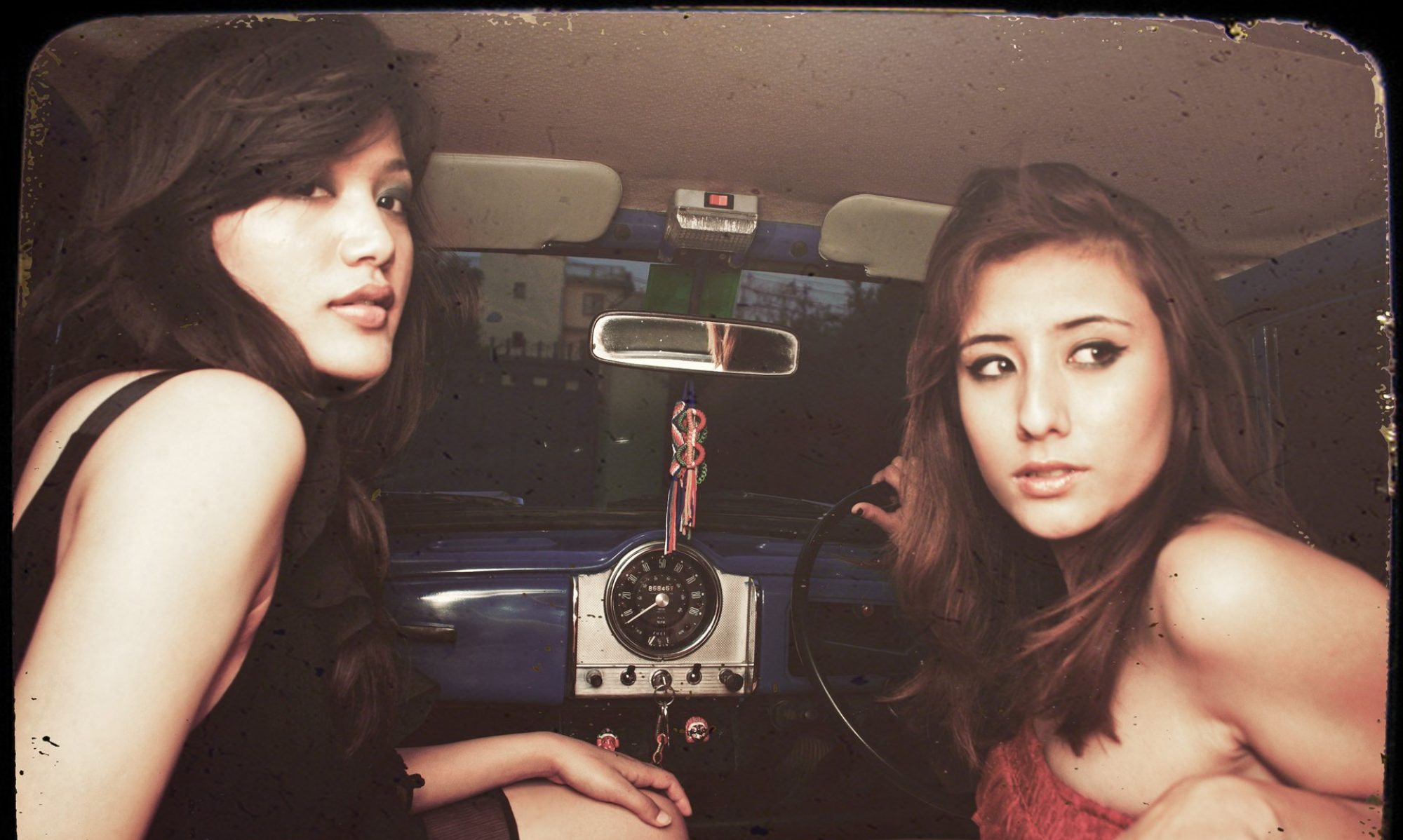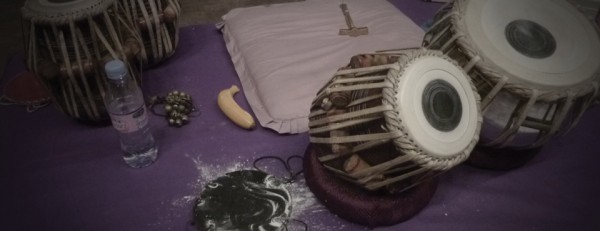Wanting to learn more about Nepali music, Laura McManus found herself in the presence of musical greatness front row and backstage at the concert launch of Taal Vidya.
It was Friday night and I found myself going to a concert. A concert in Kathmandu! As much as I lovae ’90s rock covers from bands in Thamel and a good weekly dose of Upstairs Jazz, it was nice to be doing something different, which Taal Vidya, a concert by tabla master Navaraj Gurung encapsulated. Joined on stage by a host of Nepal’s finest musicians, we transcended into a captivating world where tradition met contemporary and the eclectic sounds of blues and folk seamlessly fused with jazz and rock.
The concert, presented by the Kathmandu Music Centre, was to launch Navaraj’s forthcoming album and to ‘get together with friends’ he smiles, describing how busy schedules often keep them apart. Family, friends, teachers, travellers and the best of Nepal’s music industry managed to cap off an audience of approximately 900. One of the most important guests was Navaraj’s father, Sri Ram Hari Gurung, himself Nepal’s most venerated tabla player and his son’s most observant critic.
‘I didn’t tell him what I would play, I wanted it to be a surprise,’ Navaraj explained, ‘plus I didn’t want him to tell me, change this or that.’ But all the music we hear from Navaraj is essentially the music of his father. ‘Whatever I play is from him’ Navaraj continued, nostalgically remembering how as a youngster his father introduced him to the tabla. The family’s music repertoire doesn’t end there. Fortunately, for the longevity of traditional tabla playing in Nepal, Navaraj’s nephew, Ashesh, has also taken up the instrument, similarly passed down the skills from his grandfather.
Ashesh Rai is what I will describe as a 17 year old music prodigy. With a Bachelors in Tabla already to his name, the modest GEMS student says ‘age doesn’t matter. It is the passion and practice that makes all the difference.’ Sharing the stage with his uncle, Ashesh was the perfect accompaniment for Navaraj’s opening solo performances. Powerful, deep and delivered with passion, Navaraj brought to life the tabla in a way that I have never heard before. Wanting to ‘express the tabla not just as a rhythmical instrument but as one also capable of playing melodic lines’ his body moved naturally with the music, the emotions of the moment clear in his expressions.
With hands and fingers moving at incredible speed, dynamically, the music became louder, quicker and more intense. Playing perfectly in sync and occasionally singing the beat to maintain momentum the uncle-nephew duo, accompanied by Santash Bhakt Shrestha on the Esraj, read the music in each other’s eyes, wowing the audience with their on-stage chemistry. When asked how they achieve such a connection, Ashesh again brings it back to practice. ‘Classical music cannot be learnt without training. After practicing for so long it becomes easier to anticipate where the music will go next.’
So the tabla is neither hobby nor an occupation. It is a way of life.
 The entire mood changed as more musicians joined for the second half of the show. With Umesh Pandit on flute, Roshan Sharma on guitar, Nikhil Tuladhar on drums and Pravin Shrestha on bass the classics met their fate with contemporary instruments and sounds. Nikhil, also the drummer in Nepathya, says he feels comfortable playing alongside other ethnic percussion instruments needing to only control the dynamics, allowing greater room for improvisation. Although fusion music had its origin in the blending of genres, in recent years it has gained greater popularity as a collaboration of traditional instruments with their modern successors. The movement towards modernising and popularising instruments such as the table, esraj and ektara are part of greater efforts towards cultural preservation in the face of globalisation.
The entire mood changed as more musicians joined for the second half of the show. With Umesh Pandit on flute, Roshan Sharma on guitar, Nikhil Tuladhar on drums and Pravin Shrestha on bass the classics met their fate with contemporary instruments and sounds. Nikhil, also the drummer in Nepathya, says he feels comfortable playing alongside other ethnic percussion instruments needing to only control the dynamics, allowing greater room for improvisation. Although fusion music had its origin in the blending of genres, in recent years it has gained greater popularity as a collaboration of traditional instruments with their modern successors. The movement towards modernising and popularising instruments such as the table, esraj and ektara are part of greater efforts towards cultural preservation in the face of globalisation.
Navaraj identifies a greater funk influence in his music and enjoys performing with contemporary artists. While encouraging more collaborations of this kind, he does urge both artists and the audience to enjoy the music but also know about the instruments. Not wanting to disappoint I get Ashesh to show me his khanjira, a south Indian instrument similar to a tambourine, the face of which is made from snake skin. I similarly try to strum the ektara, a one stringed instrument used over the subcontinent. When pressed together the contours of the wooden neck change the pitch creating a uniquely distinct sound, albeit one that is impossible for an amateur to create after a few minutes of practice.
But uniquely distinct sounds were the order of the night. Joined next on stage by Mariano Abello, the founder and director of Kathmandu Jazz Conservatory, the mood took a swing towards jazz with the introduction of the saxophone. It was evident that this was a group of musicians brought together by a passion for what they do and an appreciation of different genres and styles. ‘It’s a fantastic experience to play in a group like this,’ Mariano exalts. ‘There is such a different energy.’
The finale, and my favourite piece of the night, was Rhythmic Motion. Milen Tandukar on the violin helped take the rhythm to its energetic climax. The dynamism that fused the sounds together made it difficult to sit still- I had to suppress the urge to dance in the aisle! The combination of the tabla, khanjira and drums created an electrifying effect. Watching each performer as they delivered their final solo, Navaraj couldn’t help but smile with Ashesh as they brought the show to a close just as they had opened it.
From their music and explosive stage presence it is hard to imagine that the group had not been together for years. All brilliant and internationally acclaimed musicians in their own right, I was astounded to learn that rehearsals began only a week and a half before the concert day. Sharma explains ‘we got our steps from Navaraj and then we practiced at home before bringing it all together.’ While there were some learned parts most of the performance was improvised. Yet, the trading between artists (the flute paired with the tabla and violin with guitar) and their flawless transitions were refined to perfection. In this way ‘all you have to do is create one theme then the music creates itself.’
 ‘Percussion,’ Navaraj expounds, ‘has no note or melody so when we play the music, it speaks.’ Indeed Taal Vidya – the language of rhythm- spoke to all of us in the auditorium. If, as the idiom goes, a picture tells a thousand words, then Taal Vidya conjures up thousands of images, essentially speaking a whole lot of words. Mingling with audience members after the show I wanted to know what story they heard through the music. ‘When the sax came out I felt like I was in New York swept up in the new jazz movement,’ one student of KJC reflected. Another, a traveller from the Europe, says ‘the combination of the flute and the violin in the last song made me think I was back in Ireland.’
‘Percussion,’ Navaraj expounds, ‘has no note or melody so when we play the music, it speaks.’ Indeed Taal Vidya – the language of rhythm- spoke to all of us in the auditorium. If, as the idiom goes, a picture tells a thousand words, then Taal Vidya conjures up thousands of images, essentially speaking a whole lot of words. Mingling with audience members after the show I wanted to know what story they heard through the music. ‘When the sax came out I felt like I was in New York swept up in the new jazz movement,’ one student of KJC reflected. Another, a traveller from the Europe, says ‘the combination of the flute and the violin in the last song made me think I was back in Ireland.’
Fusion was the order of the night. As Navaraj’s first concert of this magnitude, he was relieved, excited and happy it all came together. With the album, Taal Vidya, launched in spectacular fashion, the CD is now available at all music stores in Kathmandu city for only 300 Rupees.

